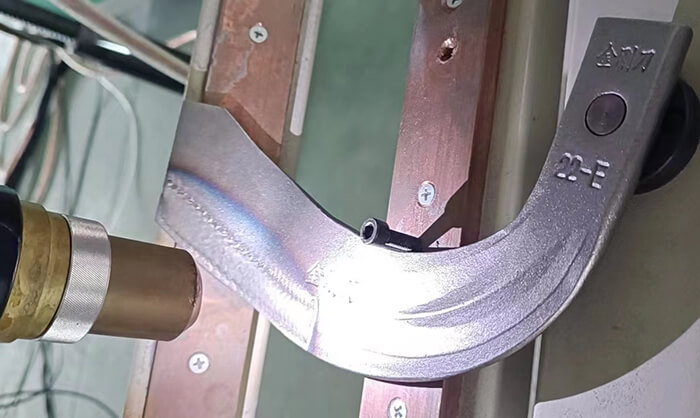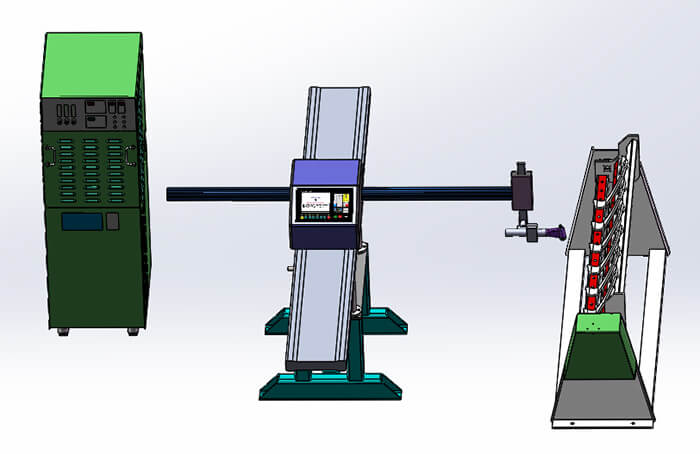Rotary Tiller Blades by Plasma Hardfacing

Rotary tillers are commonly used machines in agricultural production. They work in conjunction with tractors to perform tilling and raking actions. Due to their strong soil pulverizing ability, high tilling efficiency, and the evenness of the field after tilling, they are widely used.
When tilling the soil, rotary tillers not only need to break up clods but also chop up roots and rhizomes buried in the soil. The main component responsible for this task is the tiller blade. Therefore, the performance of the tiller blade determines the working efficiency of the rotary tiller. The hardness and wear resistance of the blade’s edge are crucial for its operational performance and lifespan. By depositing wear-resistant materials and employing hardening processes on the edges of the rotary tiller blades, we can significantly enhance their performance, ensuring efficient work and extended service life.
Rotary Tiller Blade Plasma Hardfacing Machine:

Developed by Deewi Automation, the automated plasma hardfacing machine for rotary tiller blades consists of a PTA welding power source, welding bracket, blade jig equipment, and a control system. It can be paired with a wireless remote control for safer and more convenient setting and adjustment of machine-related parameters. The blade jig can secure six blades of the same shape at once, allowing the simultaneous welding of six blades. With a high degree of automation and efficiency, the machine can also be customized with different jigs according to the shape of the blades, all sharing a single welding system, significantly saving on equipment costs for customers.
In the production of commonly used agricultural machinery, we cannot do without various hardfacing processes and equipment. Deewi Automation has extensive experience in the agricultural field. If you are looking to improve the quality and lifespan of your products, we are very interested in discussing with you the further applications and possibilities of hardfacing technology in agriculture.
